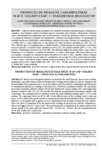Por favor, use este identificador para citar o enlazar este ítem:
http://www.alice.cnptia.embrapa.br/alice/handle/doc/909950Registro completo de metadatos
| Campo DC | Valor | Lengua/Idioma |
|---|---|---|
| dc.contributor.author | ROZANE, D. E. | pt_BR |
| dc.contributor.author | PRADO, R. de M. | pt_BR |
| dc.contributor.author | NATALE, W. | pt_BR |
| dc.contributor.author | ROMUALDO, L. M. | pt_BR |
| dc.contributor.author | SOUZA, H. A. de | pt_BR |
| dc.contributor.author | SILVA, S. H. M. G. da | pt_BR |
| dc.date.accessioned | 2011-12-15T11:11:11Z | pt_BR |
| dc.date.available | 2011-12-15T11:11:11Z | pt_BR |
| dc.date.available | 2011-12-15T11:11:11Z | pt_BR |
| dc.date.created | 2011-12-15 | pt_BR |
| dc.date.issued | 2011 | pt_BR |
| dc.identifier.citation | Revista Brasileira de Fruticultura, v. 33, n. 4, p. 1303-1310, Dez. 2011. | pt_BR |
| dc.identifier.uri | http://www.alice.cnptia.embrapa.br/alice/handle/doc/909950 | pt_BR |
| dc.description | O Brasil é um dos maiores produtores de carambola do mundo, entretanto há poucas informações científicas, especialmente estudos de nutrição mineral com mudas dessa frutífera. Objetivando contribuir com o conhecimento desse importante aspecto, desenvolveu-se estudo que permitisse avaliar o crescimento e o acúmulo de nutrientes em mudas de caramboleiras, cultivadas em solução nutritiva. O experimento foi realizado em parcelas subdivididas, sendo utilizadas como parcela as duas cultivares de caramboleira ('B-10' e 'Golden Star') e, como subparcelas, as cinco épocas de coleta de plantas, realizadas aos 208; 233; 258; 283 e 308 dias após o transplantio para a solução nutritiva. O delineamento foi inteiramente casualizado, com três repetições. As mudas foram cultivadas em vasos (8L) com solução nutritiva (pH=5,5 ± 0,5), com aeração. O experimento iniciou-se em 24-08-2005. Nos diferentes órgãos das mudas (folhas, caule e raízes), avaliaram-se o crescimento e o acúmulo de nutrientes, e os índices nutricionais. Não houve diferenças no crescimento e, em geral, no acúmulo da massa da matéria seca entre as duas cultivares. Houve acúmulo linear da massa da matéria seca das mudas de caramboleira com o tempo de cultivo, sendo maior nas folhas > caule > raízes. O período de maior acúmulo da massa de matéria seca e da taxa de crescimento relativo na planta inteira esteve compreendido entre 208 ? 233 e 233 258 dias após o transplantio para a 'B-10' e a 'Golden Star', respectivamente. Production of seedlings of star fruit 'B-10' and 'Golden Star': I biological parameters. Abstract ? Brazil is one of the greatest producer of star fruit in the world, however, there are few scientific information, especially studies of mineral nutrition with seedlings of this fruitful. In order to contribute with the knowledge of this important aspect, it was developed a study that allowed evaluating the growth and the accumulation of nutrients in seedlings of star fruits trees, cultivated in nutritional solution. The experiment was realize in split plot, with two cultivars ('B-10' and 'Golden Star') and as subplots, five collecting periods of plants, realized in 208, 233, 258, 283 and 308 days after the transplantation to nutritional solution, with 3 repetitions. The seedlings had been cultivated in pots (8L) with nutritional solution (pH=5.5 ± 0.5), with aeration. The experiment started on 08-24-2005. In the different parts of the seedlings (leaves, stem and roots), it was evaluated the growth and the accumulation of nutrients and nutritional ratios. It did not have differences in the growth and, in general, in the accumulation of the dry matter between the two cultivars. There was linear accumulation of the dry matter of the seedlings of star fruit trees with the cultivation period, it was bigger in leaves > stem > roots. The period of greater accumulation of dry matter and the tax of relative growth in the entire plant was between 208 - 233 and 233 - 258 days after the transplantation for 'B-10' and 'Golden Star' respectively. | pt_BR |
| dc.language.iso | por | pt_BR |
| dc.rights | openAccess | pt_BR |
| dc.subject | Marcha de absorção | pt_BR |
| dc.title | Produção de mudas de caramboleiras 'B-10' e 'Golden Star': I. Parâmetros biológicos. | pt_BR |
| dc.type | Artigo de periódico | pt_BR |
| dc.date.updated | 2019-09-23T11:11:11Z | pt_BR |
| dc.subject.thesagro | Averrhoa carambola | pt_BR |
| dc.subject.thesagro | Exigência Nutricional | pt_BR |
| dc.subject.thesagro | Solução Nutritiva | pt_BR |
| riaa.ainfo.id | 909950 | pt_BR |
| riaa.ainfo.lastupdate | 2019-09-23 -03:00:00 | pt_BR |
| dc.contributor.institution | DANILO EDUARDO ROZANE; RENATO DE MELLO PRADO; WILLIAM NATALE; LILIANE MARIA ROMUALDO; HENRIQUE ANTUNES DE SOUZA, CNPC; SILVIA HELENA MODENESE GORLA DA SILVA. | pt_BR |
| Aparece en las colecciones: | Artigo em periódico indexado (CNPC)  | |
Ficheros en este ítem:
| Fichero | Descripción | Tamaño | Formato | |
|---|---|---|---|---|
| APIProducaodemudasdecaramboleiras.pdf | 804,09 kB | Adobe PDF |  Visualizar/Abrir |









